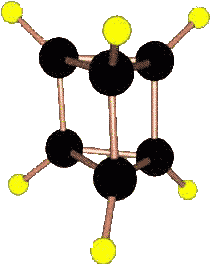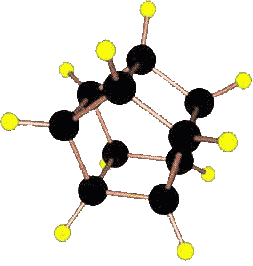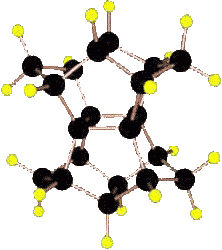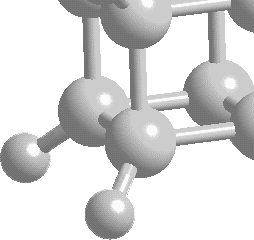As
previously mentioned, cubane was the first from a growing
family of strained ring systems and ever since it's first
successful synthesis, chemists have been dreaming up molecules
with other unusual conformations, hoping that they would be
stable enough to actually exist.
Below are 3 more
examples of other strained ring systems:
Triprismane
Triprismane
was first to follow cubane and the synthesis was successfully
completed in 1973 giving a molecule with the molecular formula
C6H6.

Pentaprismane
Pentaprismane
has the molecular formula of C10H10
and is basically composed of two five membered rings laying
on top of one another to form a pentagonal prism. The first
synthesis of this molecule was successfully carried out in
1981 and follows a similar procedure to the synthesis of cubane.

Pagodane
The basis of Pagodane
is a system of 4 inter-connected five membered rings which
are boded together to give a molecule with the molecular formula
of C20H20. It can be synthesised from
a commerically available insecticide called isodrine and was
first done so in 1987.

Pictures
taken from http://semsci.u-strasbg.fr/ |



